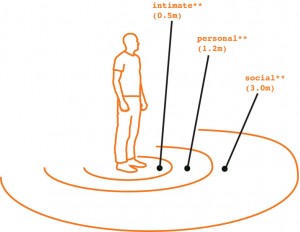3. elements of screenplay form
The filmic elements of a screenplay are derived from the nature of the motion picture art form. They are the result of the medium’s ability to move, its ability to create both a time and a space that do not exist in reality, and its ability to present imagery and sound as abstractions of reality. Film content is what the screenwriter wants to say and the structure within which it is said. It’s the story to be told, the characters to be met, the places to go, and the theme to be communicated.” — Margaret Mehring, bold type taken from the original
Overview.
In her book, The Screenplay: A Blend of Film Form and Content, Margaret Mehring investigates the screenplay in terms of its formal attributes — what she calls the “filmic elements” of Filmic Time, Filmic Space, Motion, Imagery, and Sound — along with the characteristics of its content, of which she lists Theme, Structure, Character, and Mise-en-Scene. In fact, content is form, as we will examine in this section.
Footnotes:
Permanent link to this article: https://www.screenplayology.com/content-sections/screenplay-form-content/
SCREENPLAYS ARE STRUCTURE.” — William Goldman1 . . . the teaching of ‘structure’ has in many venues supplanted the teaching of writing.” — Howard Rodman2 3.1.1. Overview. Goldman’s assertion that screenplays are structure is actually rather modest. In fact, all narrative texts are structure, their content inseparable from their formal qualities. Facets of structure include …
Nothing is more central to the manuals than their structural approach to screenplays, in particular, the importance of the three-act paradigm.” — J.J. Murphy1 Outside of the world of film, many possible contributory factors might have helped shape this surging trend in unconventional narration: the fragmenting ‘postmodern condition’ and its revolt against master narratives; the …
The script and the film are always ‘establishing’ something. Now, don’t you go ‘establishing’ things.” — David Mamet 1 With today’s stress on fast-moving action, some practitioners seem to have decided that exposition is innately bad and should be minimized.” — Kristin Thompson 2 3.3.1. Overview. Only Kristin Thompson knows if she had David Mamet …
The screenwriter creates filmic time on paper. The production people break it apart and produce filmic time in bits and pieces on film.” — Margaret Mehring1 Although production and set designer — together with director and cinematographer — are ultimately in charge of the setting’s realization, a script will already indicate whether the film’s requirements …
. . . there is no such thing [as character]. It doesn’t exist. The character is just habitual action. ‘Character’ is exactly what the person literally does in pursuit of the superobjective.” — David Mamet1 3.5.1. Overview. If we take Mamet at his word, I guess we can stop here. There’s no such thing as …
I am not a writer. I am a screenwriter, which is half a filmmaker.” — Paul Schrader1 3.6.1. Overview. If all other observations about the screenplay are open to debate, one is not: every screenplay is written for the camera. As Howard Rodman has argued, “Screenplays are, to use James Schamus’s fine phrase, ‘brutally instrumentalist.’ …
“I have assumed, and attempted to demonstrate, that music and dialogue, while they reinforce the photographic image, are really subsidiary lines in the total film composition.” — George Bluestone.1 “The role which sound is to play in film is much more significant than a slavish imitation of naturalism . . . ; the first function …


2 pings
[…] screenplay structure.” Screenplayology: an online center for screenplay studies. n.d. Web. http://www.screenplayology.com/content-sections/screenplay-form-content/ Here’s a link to a pdf for easy […]
[…] Andrew Kenneth Gay, “Elements of screenplay form” and “Classical screenplay structure.” Screenplayology: an online center for screenplay studies. n.d. Web. http://www.screenplayology.com/content-sections/screenplay-form-content/ […]